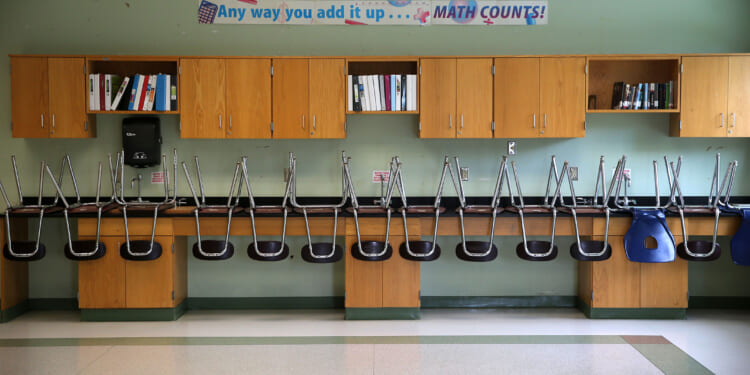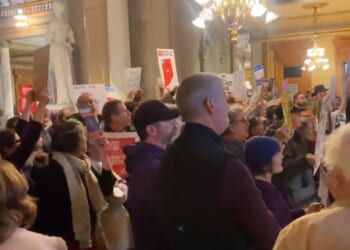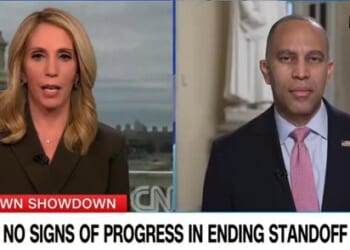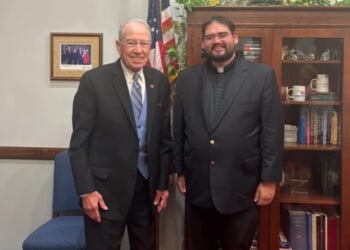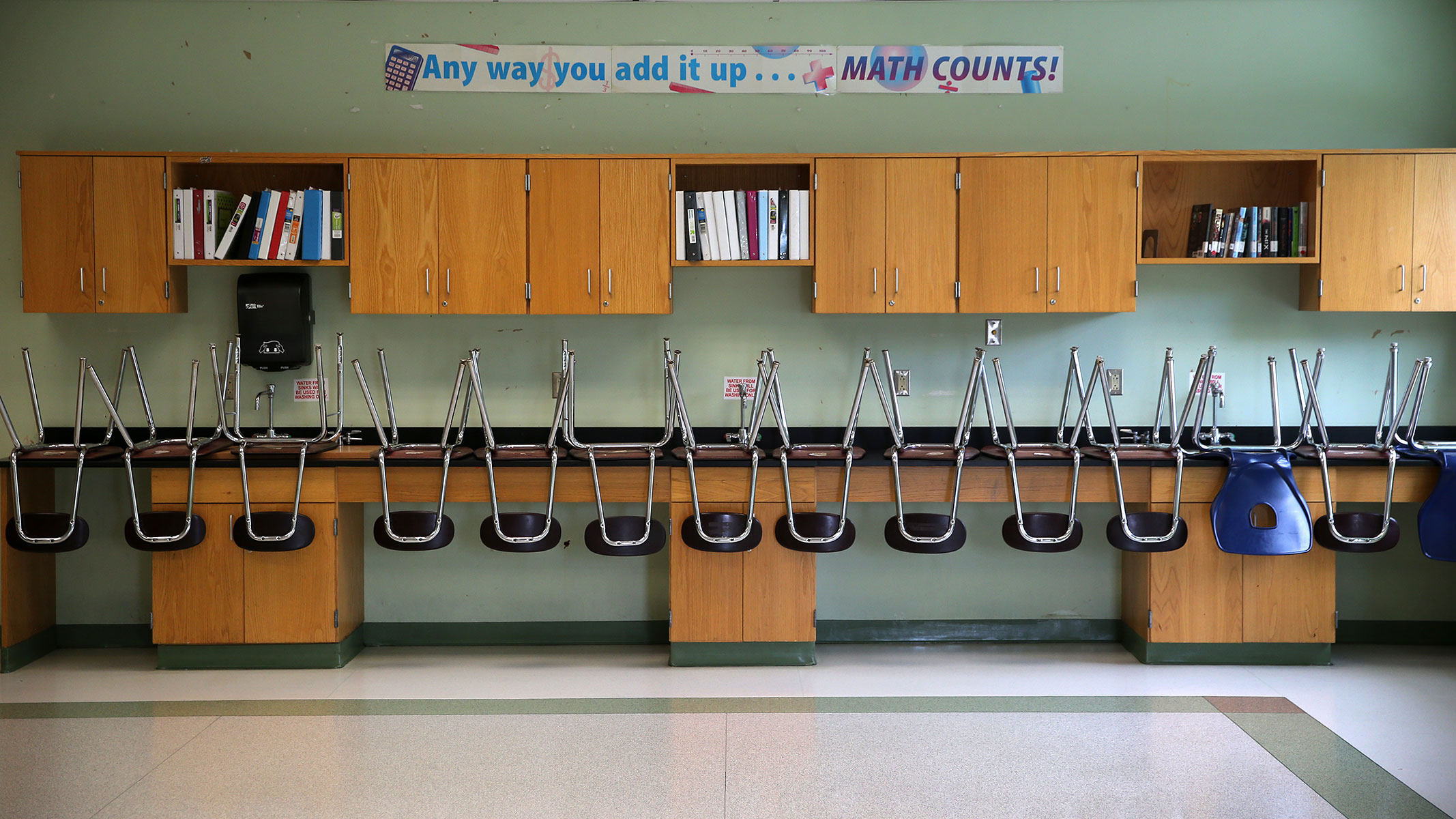
No Adult Left Behind: How Politics Hijacks Education Policy and Hurts Kids, by Vladimir Kogan (Cambridge University Press, 328 pp., $29.99)
In February 2021—the same month the Centers for Disease Control and Prevention released a school-reopening plan that effectively extended the Covid closures—teachers’ union bosses Randi Weingarten of the American Federation of Teachers (AFT) and Becky Pringle of the National Education Association (NEA) were in constant contact with then-CDC director Rochelle Walensky. The lobbying paid off handsomely, according to reporting by the New York Post, with the CDC adopting union advice “nearly verbatim” in at least two cases.
Finally, a reason to check your email.
Sign up for our free newsletter today.
By now, even most mainstream liberal commentators have acknowledged that the long-term school closures of the pandemic era were disastrous. Yet the root of that disaster—the tendency to put the political preferences of adults over the well-being of America’s K–12 children—have barely been discussed beyond the pandemic context.
A new book by Ohio State University political scientist Vladimir Kogan, No Adult Left Behind: How Politics Hijacks Education Policy and Hurts Kids, looks to change this. Kogan draws attention to how schools put culture-war politics and other considerations over the needs of students and parents.
He begins with the problematic notion that “schools are ‘community institutions.’” This is a politically convenient concept that allows schools to get away with poor performance and drift from their core mission, making education about everything but academic performance. “Would residents be OK with drinking contaminated water, laced with dysentery and typhoid, in order to protect the jobs of those who work for public water agencies?” Kogan asks.
Many American educational failures, Kogan argues, are failures of democratic accountability. The voting public is not just parents; academic outcomes aren’t always voters’ highest priority; and most local or school board elections are either uncontested or fail to present meaningful choices to voters. It also doesn’t help that education politics has become so polarized. As Kogan writes, “It is adults who ultimately control public school districts through the ballot box, and what they want is often quite different than what public school students need.”
Schools face a “trilemma,” writes Kogan. They must provide “a quality education for students, democratic accountability to local voters, and good-paying employment opportunities for local residents.” But because children don’t vote, quality education often falls by the wayside.
This is especially true when it comes to decisions to close or consolidate schools—an increasingly common occurrence in a time of declining school-age population. Kogan finds that consolidations and closures by and large don’t affect students’ academic outcomes, but they’re hard to implement because adult concerns make them “unavoidably a political rather than a technocratic process.” The result is often wasteful and inefficient spending.
The first proposal in Kogan’s “framework for education reform” is unobjectionable: school board elections should be held in Novembers of even years so that they coincide with presidential and midterm elections and maximize voter turnout. Kogan acknowledges that this reform could “backfire” if it encourages uninformed voters to cast their ballots based on political advertising and endorsements from adult interest groups and political parties. His second suggestion is for states to give higher ratings to schools that show strong improvements in student outcomes than to schools that already have high average test scores. Ratings based on the latter measure, he writes, “unfairly penalize schools serving disadvantaged students.”
Emphasizing academic improvement risks going too far in the other direction: penalizing schools that serve students from stable middle-class families. For instance, in Kogan’s schema, a school in which 100 percent of students meet the literacy benchmarks from year to year would be ranked below one in which 30 percent are literate one year and 40 percent the next. Kogan dismisses this concern: “Many parents . . . use average peer achievement as a proxy for school quality, even though we know it is not a very good one.” What Kogan and the economists he cites fail to consider is that schools with high average student achievement also are less likely to have issues with crime, violence, and behavior more generally. Parents have reasons beyond academics for considering a school’s average test scores.
Kogan’s third proposed reform is school choice—though he prefers charter schools to private school vouchers.
“[M]y ideal choice program,” he writes, “would work as a ‘gun behind the door’—a credible threat that changes the internal operations and politics of a school district for the better while rarely having to go off.”
As arguments for school choice go, this one is unconvincing. Why build a charter school if the intent is merely to goad district schools into improving? The threat is credible only if students actually have a choice, and district schools will improve only if there is active competition in the marketplace.
Kogan concludes with a broader point about local democracy: “Future conversations about education reform should begin by acknowledging that local democratic control of schools, although the default, is not the only option,” he writes. “Our system is a historically contingent accident that emerged directly out of adult political interests and agendas—in the case of the system’s founders, an adult moral panic,” he writes, referring to how education policy in the Massachusetts Bay Colony was shaped in part by concerns about Satanic influence.
It’s an odd note on which to end. While local democratic control can certainly go wrong, that hasn’t been the biggest problem plaguing American schools in recent years. States like Mississippi, which generally ignored federal guidance on schools reopening and the teaching of phonics, have seen dramatic improvements in literacy rates and achievement; other states that followed the federal guidance have declined. If there is any “adult moral panic” in American education, it would be the disastrous and anti-democratic educational policies of the Covid era.
Nevertheless, Kogan’s book makes a persuasive case that American schools today are busy catering to the needs of every constituency—teachers, nonparent voters, politicians, culture warriors—except the children whom they are supposed to educate.
Photo by David L. Ryan/The Boston Globe via Getty Images
City Journal is a publication of the Manhattan Institute for Policy Research (MI), a leading free-market think tank. Are you interested in supporting the magazine? As a 501(c)(3) nonprofit, donations in support of MI and City Journal are fully tax-deductible as provided by law (EIN #13-2912529).
Source link

